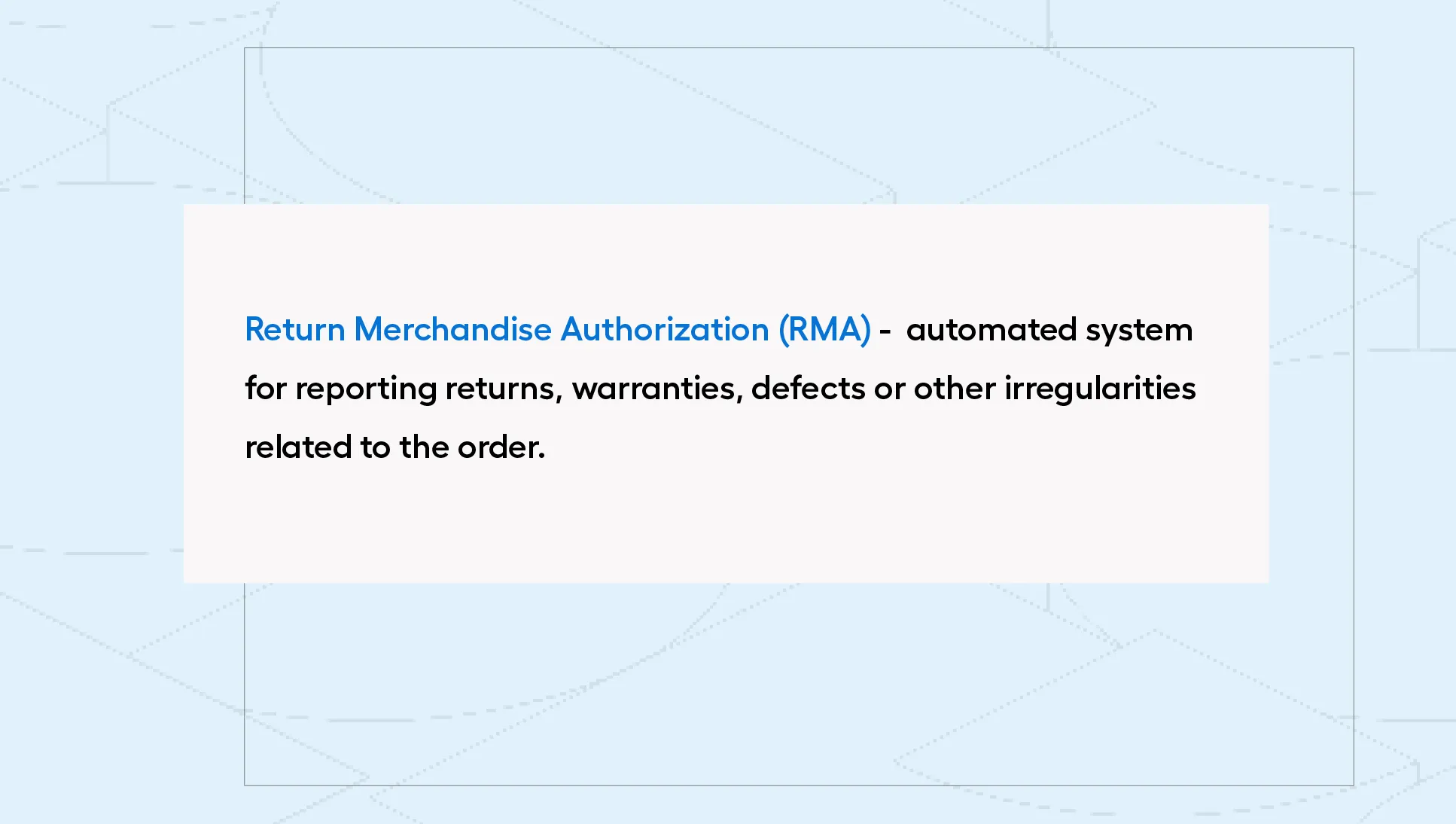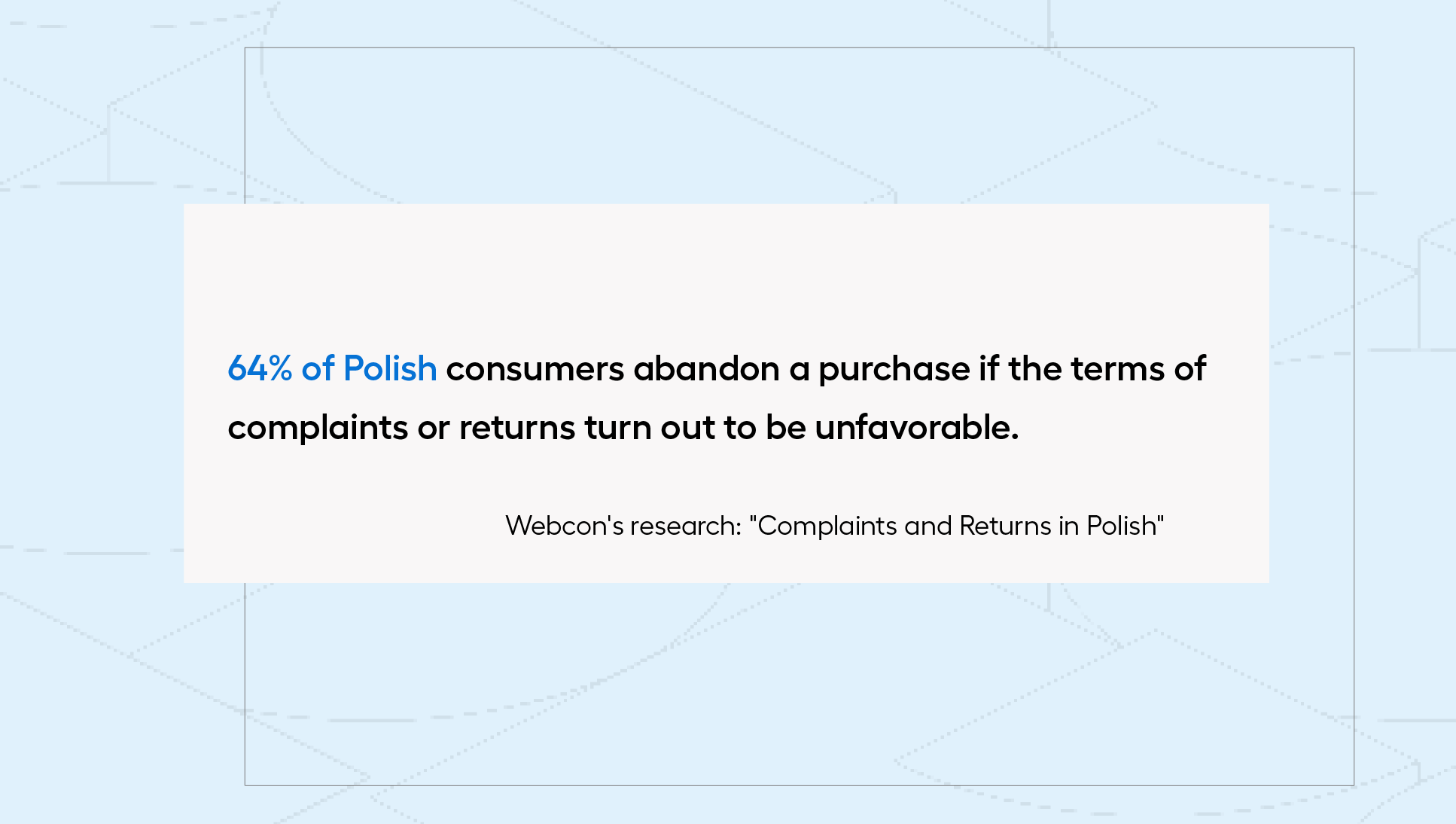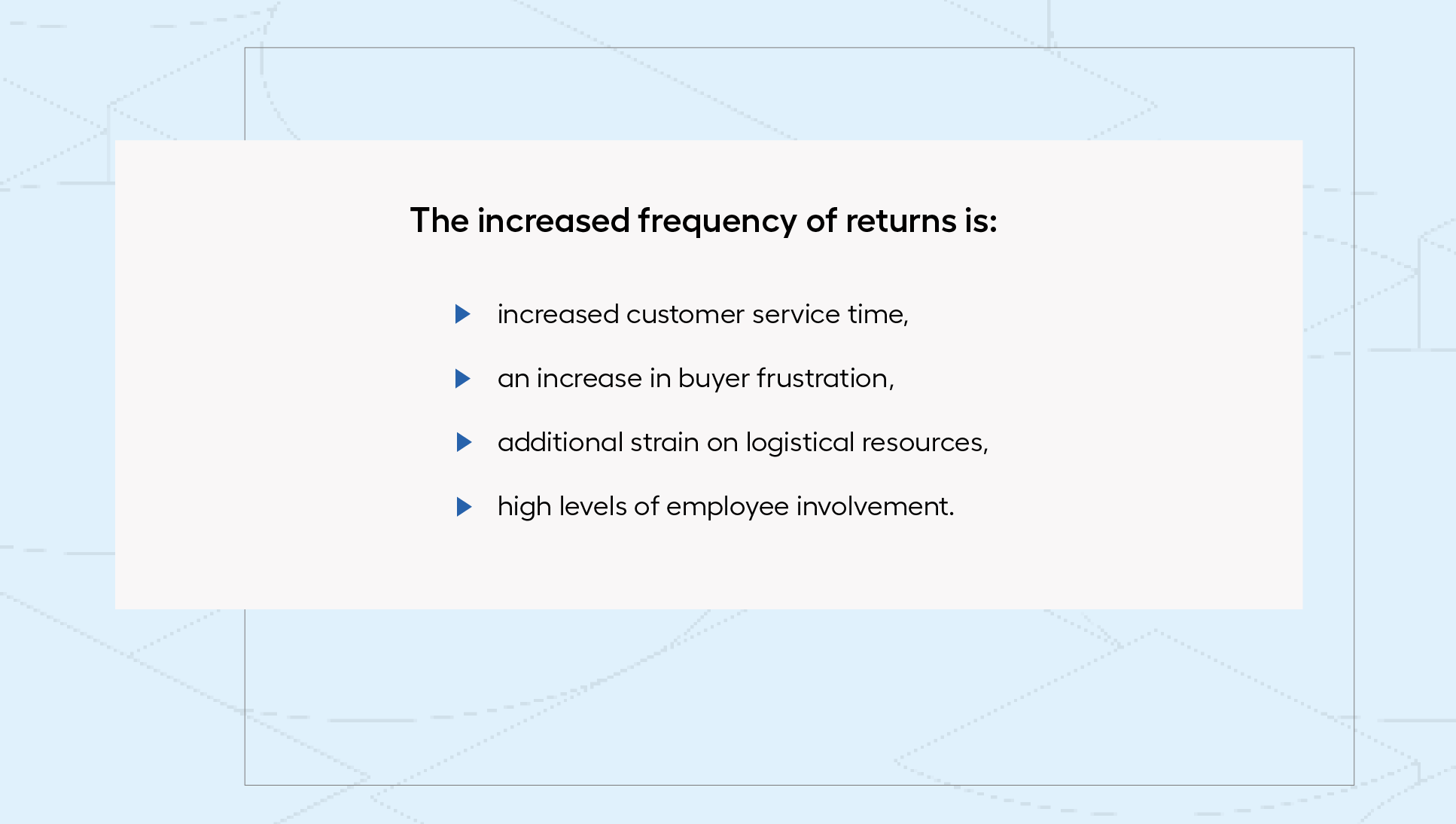What if the ordered product does not meet my expectations? What will I do with a size that is too big? What if I happen to order the wrong item by mistake? These are the kinds of questions eCommerce customers still face. Even though online shopping has long passed into the background, and eCommerce owners do their best to present their offerings online - as many as 97% of customers assume that they can return when ordering online (according to a PostNord report). For this reason, it is worth guaranteeing them from the beginning that they will be able to return the product easily and conveniently if necessary. This can be ensured by implementing an RMA system, which not only serves to improve the customer experience, but also allows you to optimize the returns process. Read on and find out why you should enrich your platform with an RMA module.
RMA - a way to effectively manage returns in eCommerce
Seamless ordering, fast delivery and a satisfying unboxing experience are only part of what consumers expect from ordering from an online store. Nowadays, a quick and intuitive option to place a return is also a standard. Strict and unclear policies in this regard can discourage customers from placing an order and cause them to purchase from a competing e-store. The solution to this problem, which more and more eCommerce owners are opting for, is RMA, or Return Merchandise Authorization. What exactly does it consist of?

RMA is an automated system for reporting returns, warranties, defects or other irregularities related to an order. In this way, the eCommerce store becomes more customer-friendly, offering customers the confidence that in case of problems they can easily and efficiently use the return or complaint procedure. The technical operation and capabilities of RMA may vary depending on the size or type of eCommerce, but in any case the module's operation is based on several key elements:
- intuitive user interface - with a clear and easy-to-use interface, customers can report problems with an order, view their purchase history and monitor the progress of the return or complaint process.
- automation of the request process - the system automatically assigns a unique request number to each complaint or return. This makes it easier to manage requests and track their status for both customers and store employees.
- shipment tracking - RMA allows you to monitor the status of returns, which is especially important for online stores with a wide range of products. Customers can check when their return has been accepted and when they can expect a refund or a new product, preventing the frustration of waiting.
- Fast processing and decisions - the system is also a major convenience for employees handling returns. It helps speed up the processing of requests by giving employees access to the full transaction history and order details.
RMA & eCommerce - what do you gain from this combination?
How to ensure that the customer does not feel anxious about the vision of a complicated product return process? The basis in this case is to develop a consistent and transparent returns policy. But that's not all - an equally important step in ensuring customer satisfaction is to transfer this policy into real action. The solution that makes the return policy a reality is the RMA module. What additional benefits will its implementation bring?
Enhance positive customer shopping experience
Online shoppers are still cautious about the topic of returns - according to a Webcon survey, as many as 64% of Polish consumers abandon a purchase if the terms of complaints or returns turn out to be unfavorable. The very knowledge that, if necessary, submitting a return will go smoothly and will not require excessive effort is an important element in making positive purchase decisions. From the consumer's point of view, the RMA system provides peace of mind and influences the positive experience of using the e-store. If customers are assured that they can return a product under transparent procedures in any case, they will be much more likely to make a purchase from your eCommerce site.

Implementing RMA also brings long-term benefits that go well beyond encouraging a single order. The Return Merchandise Authorization module also fosters long-term relationships and customer loyalty by making customers feel secure and comfortable throughout the purchasing process.
Optimization of service costs
Increased customer service time, additional strain on logistical resources and the risk of errors throughout the returns process - these are just some of the areas that can generate additional costs for your online store. Although on a day-to-day basis the percentage of returns in your e-store may be small, you are bound to experience periods during the sales year when the number of requests sent increases significantly (which can partially paralyze ongoing operations). Increased returns usually occur during seasonal sales, Black Friday or December holidays.

RMA tools allow automation of individual steps in the return process. In this way, it is possible to significantly minimize the involvement of employees in manual and time-consuming operations, which consequently reduces handling costs. Among other things, the RMA system is responsible for: fast and accurate processing of requests, monitoring the status of returns and generating automatic notifications to customers at each stage of the process. This approach not only translates into increased budgets, but also saved time, which you can use to develop your eCommerce more efficiently.
Accelerate processes
Customers expect both fast order processing and smooth completion of returns or complaints. Even minor delays (a few days) can lead to frustration for buyers. The RMA module not only allows you to create an intuitive form and speed up the processing of returns, but also allows customers to track every step of the process. In this way, the buyer gains a sense of being kept up to date and confidence that their return is being handled without unnecessary delays. In this way, you also reinforce the store's impression of commitment, positioning yourself as a reliable and professional seller, which further increases customers' confidence in your platform.
Reduce risk of fraud
Distance selling is fraught with the risk of abuse on the part of both the seller and the buyer. In the case of returns, it happens that customers send back the wrong product (e.g., different from the original or used) or try to get a refund, even though they did not send a return shipment. Such actions can expose eCommerce to losses - how to reduce their occurrence? Implementing the RMA module allows you to ensure accurate control of returned products, for example, by thoroughly verifying them and identifying the real reasons for the return. This is possible, among other things, with the help of precise return forms that require customers to provide specific information about the product, the reason for return and the condition in which it is. In this way, an online store can protect itself from fraudulent practices, safeguard its finances and maintain customer confidence.
How to implement an effective RMA system in an online store?
It is estimated that customers can return up to ⅕ of items purchased online. Depending on the industry you operate in, this value may vary. However, in each case it is possible to reduce it. By implementing properly selected RMA tools, you can reduce the number of shipments. What functionalities are worth paying attention to when deciding to take this step? It is important that the RMA module includes elements of a transparent returns process:
- Integration with external systems - one of the key elements of a successful RMA system is integration with the company's existing systems, such as ERP (Enterprise Resource Planning) or CRM (Customer Relationship Management). This allows for the collection and exchange of data, such as information on orders, customers or inventory in real time. This allows both employees handling returns and customers to have access to up-to-date information on the status of returns. This improves communication, eliminates errors due to outdated data and thus speeds up the entire process.
- Clear and transparent return form - a key step in the returns process is to report them. For this reason, take the time to create a clear, intuitive and transparent return form. It is important that customers can find it on the store's website without much trouble. The form should contain fields that allow you to accurately describe the reason for the return and the condition of the returned product. This allows you to understand why the customer is returning the product and minimizes the risk of confusion.
- Communication channels - in the era of omnichannel (selling in multiple channels at the same time), it is important to provide the opportunity to make returns through a variety of tools. In addition to filling out a form, it is worthwhile to guarantee the customer the ability to report a problem via online chat or a hotline.
- Automatic label generation - when a customer fills out a return form, the RMA system should automatically generate a return label and notifications confirming acceptance of the request. Automation not only reduces the customer's waiting time for a response, but also reduces the risk of human error.
- Precise documentation - the RMA system should generate complete documentation related to the return. Reliable documentation makes it easier to track the history of returns and the reasons for them. In addition, it is also helpful in case of complaints from suppliers or for accounting purposes.
RMA - manage & reduce returns
Implementing the RMA module in an online store helps increase customer confidence by providing them with an easy and transparent returns and complaints procedure. It also translates into streamlined and automated after-sales service, thus directly increasing the efficiency and profits of the e-store. For these reasons, RMA is becoming an increasingly popular tool in eCommerce, helping stores meet growing customer expectations and compete in an increasingly demanding market. What's more, implementing RMA isn't just about efficiently managing returns and complaints on a daily basis. It's also an opportunity to collect information about failed orders, which can be analyzed and, consequently, by making appropriate changes, reduce the number of returns in the future. Would you consider implementing the RMA module in your online store?



